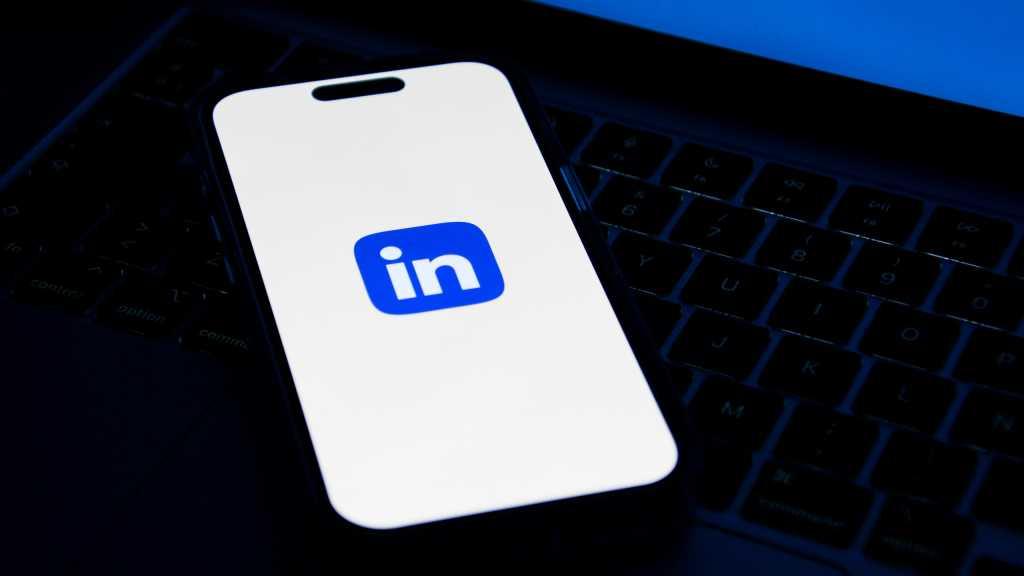LinkedIn to Use Member Data for AI Training: Opt-Out Option Available
5 Sources
5 Sources
[1]
Microsoft-owned LinkedIn will use your data for training AI, unless you opt-out - General Chat
Companies have two options when they introduce new features: make them opt-in or opt-out. The first is the user-friendly option, as users may select to use a new feature or allow the company to do something. The second is the opposite. It benefits the company, as all users are rolled in and users needing to become active to avoid a change. This is true for a change on Microsoft-owned LinkedIn. Microsoft plans to start using user data on Linkedn for AI training starting November 3, 2025. The kicker: all users are opted in. Means, if you do not become active, your data will be used to train generative AI. Microsoft writes: "Starting November 3, 2o25, we'll use some of your LinkedIn data to improve the content-generating AI that enhances your experience, unless you opt out in your settings". So, there is an opt-out and Microsoft apparently is also emailing users of the service about the change. The change affects users worldwide. However, users from the European Economic Area, Switzerland, and the UK won't have their data "made available to certain LinkedIn affiliates (such as Microsoft) for training generative AI models without further notice" according to a help document we spotted on the LinkedIn website.
[2]
LinkedIn is using your data to train its AI models. Here's how to opt out
Disabling this setting prevents your data from being used, but data already used for training can't be taken back retroactively. Microsoft-owned social networking site LinkedIn will soon start using the data of its users to train its AI models, reports Windows Latest. The platform has sent out emails to users about the change, which will start November 3rd, 2025 and apply to the US, EU, UK, and Switzerland. According to LinkedIn, the AI training will improve features such as the algorithm and text rewriting with AI, as well as make it easier for recruiters to find candidates. The data used comes from public profiles and posts, but not from private messages or hidden entries. The setting is called "Data for Generative AI Improvement" and it's enabled by default. Fortunately, it's possible to disable the setting to prevent further use of your data for training LinkedIn's AI models, but any data already used for training can't be taken back retroactively. To disallow use of your data for training LinkedIn's AI models, click on your profile photo at the top of the LinkedIn site and navigate to Settings > Data Privacy > Data for Generative AI Improvement, then disable the setting labeled "Use my data for training content creation AI models." Alternatively, click this link to get there right away.
[3]
LinkedIn is expanding its AI training to member profiles in the EU
In late 2024, LinkedIn started using member profiles to train its AI. At the time, this was restricted to only certain areas, such as the U.S. and other countries. One year later, LinkedIn is now adding all of the regions that weren't previously included. Once the change goes into effect, everyone's profile on LinkedIn may be used to train the site's generative AI. The announcement came quietly, like the one in 2024. LinkedIn updated its generative AI FAQ webpage to include the new rules. The new rules are the same as the old rules, except they now apply to the UK, EU, European Economic Area (EEA), Switzerland, and basically everywhere else that wasn't impacted by the initial changes in 2024. LinkedIn will start using member profile data to train its AI on Nov. 3, 2025. This setting is enabled by default, so if you don't want your data being used to train LinkedIn's AI, you'll need to manually log in and opt out of it. Profiles for members under the age of 18 won't be used for training purposes at all. If anyone is curious about how LinkedIn will use the data and what data the company intends to use, LinkedIn has a whole webpage dedicated to just that. The list is pretty long and contains just about every piece of data you can generate on the platform. Fortunately, opting out of AI training is pretty simple. We have a full guide here, but here is a quick version in case you need it. Once done, LinkedIn will no longer use your profile data to train its AI. This will prevent LinkedIn from using any data that you generate moving forward. However, it may still keep the data it collected before you toggled it off. Should you want that data removed from LinkedIn's database, there is a "Data Processing Objection Form" that you can fill out to have your data removed after the fact. Using social media profiles to train data has been something of a trend over the last year. Meta started using posts to train AI in mid-2024, and opting out of that wasn't particularly easy at the time. X confirmed that it allows third parties to train AI off of your X posts in late 2024. So, while you're on your LinkedIn profile opting out of this, consider checking your other social media profiles as well, as there are likely a few places where you need to opt out.
[4]
LinkedIn Wants to Train AI Models on Personal Data, Here's How to Opt Out
LinkedIn will also share user data with Microsoft for targeted ads LinkedIn has updated its terms of conditions to soon start collecting user data to train its artificial intelligence (AI) models. The professional social networking platform said last week that starting November 3, it will begin collecting some user data to improve the models powering the AI features on the platform. Additionally, it will also begin sharing some of the data with Microsoft and other affiliates to allow them to show targeted ads to users. While this raises several data privacy concerns, LinkedIn maintains that users can opt out. LinkedIn to Let Microsoft Show Users Targeted Ads On its support page, the professional networking platform announced that, starting from November 3, it will begin using some user data to train "content-generating AI models." LinkedIn said this was being done to "enhance your experience and better connect our members to opportunities." While data from private messages will not be collected, profile details and public posts will be used to train AI models. The new changes affect users in the European Union countries, the European Economic Area (EEA), Canada, Hong Kong, and Switzerland. Apart from this, the company is also making changes to how it uses and shares user data with affiliate companies. Affiliates for LinkedIn include all the companies that are related by ownership, such as LinkedIn Ireland and LinkedIn Corp., the parent company Microsoft, and its subsidiaries The platform is updating its global privacy policy to expand the types of data that it shares with Microsoft for its ad services. Essentially, the company is saying that user data will be collected so that Microsoft can show them more personalised ads across different channels. "This data may include your LinkedIn profile data, feed activity data, and ad engagement data; it does not include any data that you do not allow LinkedIn to use for ad purposes," the company said. How to Stop LinkedIn from Collecting Your Data While the updated terms of service will enable the company to collect certain user data, it said that it will honour users' wishes, and if some members do not want LinkedIn to collect the data to either train AI models or get targeted ads, they can opt out. To stop LinkedIn from using your data to train AI models, you can click on this link and turn off the toggle. Alternatively, users can tap on their name to open the menu and go to Settings and Privacy and select Data Privacy. There, under the "How LinkedIn uses your data," go to "Data for Generative AI Improvement," and toggle it off. Similarly, to stop LinkedIn from using your data to show targeted ads, you can either click this link and turn off the toggle. Alternatively, you can go to Settings and Privacy and select Advertising data. At the bottom, you will see the "Off LinkedIn data" menu. Go to "Share data with affiliates and partners" and turn off the toggle.
[5]
LinkedIn will use your profile data to train its AI model: Here's how you can stop it
Opt-out is possible, but only future data is excluded -- past info remains in AI training. LinkedIn has confirmed that it will soon start using member data to train its artificial intelligence models. Beginning November 3, 2025, the platform will pull information such as your profile details, public posts, resumes, and activity to feed into its content-generating AI systems. The biggest issue? This setting will be on by default. Users who don't want their data used will need to opt out manually. LinkedIn says this is designed to "enhance your experience and better connect our members to opportunities." The company also clarified that private messages will not be included, but nearly everything else visible on your profile or shared publicly will be. The rollout applies to members in the EU, European Economic Area (EEA), Canada, Hong Kong, and Switzerland. This update also comes with changes to LinkedIn's global privacy policy. The company will expand its data sharing with its parent firm, Microsoft, and other affiliates. That means your profile info, feed activity, and ad engagement data can now be used to deliver more personalised ads across Microsoft platforms. LinkedIn emphasised that it won't include data you've explicitly restricted for ad use; however, the policy still broadens the scope of what can be shared. If you're not comfortable with your data being used for training on LinkedIn's AI, you can opt out through your account settings: LinkedIn has also provided a direct link on its support page for faster access. Also read: Apple Diwali offers announced: Big discounts on iPhone 17 series, MacBooks, AirPods and more There's a significant limitation, though: opting out only prevents future data from being used. Anything collected before you disable the setting will remain in LinkedIn's AI training environment.
Share
Share
Copy Link
LinkedIn announces plans to use member data for AI model training starting November 3, 2025. The change affects users globally, with an opt-out option available. This move raises privacy concerns and expands data sharing with Microsoft for targeted advertising.
LinkedIn's AI Training Initiative
Microsoft-owned LinkedIn announced plans to use member data for training its artificial intelligence models, effective November 3, 2025
1
2
. This global policy change impacts users in the US, EU, UK, and Switzerland .
Source: Digit
The company aims to enhance platform features like its algorithm, text rewriting, and recruiter search capabilities
2
. However, this initiative has raised significant data privacy concerns among users.Data Collection and Opt-Out Process
LinkedIn will collect data from public profiles, posts, and resumes, explicitly excluding private messages or hidden entries
2
4
. Crucially, the AI training setting will be enabled by default, requiring users to manually opt out if they wish to prevent their data from being used5
.
Source: PCWorld
To opt out, users can navigate to 'Settings > Data Privacy > Data for Generative AI Improvement' and disable the "Use my data for training content creation AI models" setting
2
. A direct link is also available on LinkedIn's support page4
.Limitations and Broader Data Sharing
An important caveat is that opting out only affects future data. Any data collected prior to disabling the setting will remain in LinkedIn's AI training environment
5
. For retroactive data removal, users must submit a "Data Processing Objection Form" .Furthermore, LinkedIn is updating its global privacy policy to increase data sharing with Microsoft and its affiliates. This includes profile, feed activity, and ad engagement data, aimed at delivering more personalized ads across Microsoft platforms
4
5
.Related Stories
Industry Trend and User Concerns
LinkedIn's action reflects a broader industry trend, with platforms like Meta and X also utilizing user data for AI training . This widespread practice intensifies user concerns regarding data privacy and the extent to which their personal information is used by tech companies. The ongoing challenge remains balancing technological advancement with safeguarding user privacy in the evolving digital landscape.

Source: Gadgets 360
References
Summarized by
Navi
[1]
Related Stories
Recent Highlights
1
Google launches Gemini 3 Flash as default AI model, delivering speed with Pro-grade reasoning
Technology

2
OpenAI launches GPT Image 1.5 as AI image generator war with Google intensifies
Technology

3
OpenAI launches ChatGPT app store, opening doors for third-party developers to build AI-powered apps
Technology








